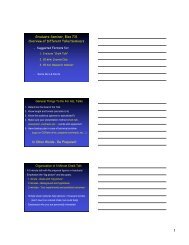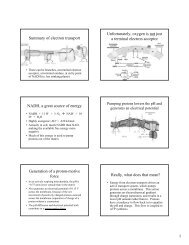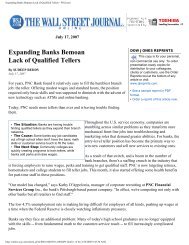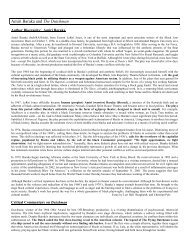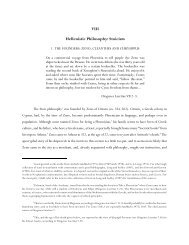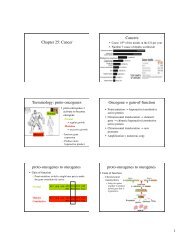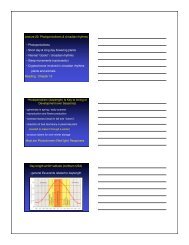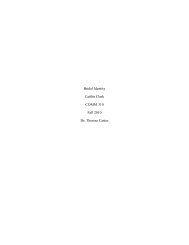V. VERB QUALITIES - UW-Parkside: Help for Personal Homepages
V. VERB QUALITIES - UW-Parkside: Help for Personal Homepages
V. VERB QUALITIES - UW-Parkside: Help for Personal Homepages
You also want an ePaper? Increase the reach of your titles
YUMPU automatically turns print PDFs into web optimized ePapers that Google loves.
Perfect Aspect<br />
122<br />
As a main verb, have indicates possession of some thing or quality. As an auxiliary, it<br />
combines with the past participle to <strong>for</strong>m a structure called the perfect. Like the<br />
progressive, the perfect is technically a verb aspect but often referred to as a tense.<br />
Unlike the ing-participle, the en-participle (past participle) does not confuse us by serving as<br />
a gerund. It makes up <strong>for</strong> this by being involved in both perfect aspect and passive voice.<br />
The perfect aspect has a <strong>for</strong>m of have as a primary auxiliary, followed by a past participle.<br />
The have is the real key to recognizing the perfect. When have is the only verb, it is the main<br />
verb and (loosely) denotes possession. If have is part of a string of verbs, then it is an<br />
auxiliary and it is signally the perfect.<br />
The tense of a perfect verb phrase is actually determined by the auxiliary in front of it,<br />
assuming there is no modal to confuse matters. Sentence (1) below is in the present<br />
perfect because have is a present tense <strong>for</strong>m, even though we are talking about things from<br />
the past. The past perfect equivalent would have the past tense had as in sentence (2).<br />
(1) I have often walked down this street be<strong>for</strong>e.<br />
(2) I had often walked down this street be<strong>for</strong>e.<br />
Once again, we see that the English tense-aspect system does not have a very exact<br />
relationship with real time. The perfect implies that the action was already completed<br />
(“perfected”) at the time specified by the tense. The present perfect in sentence (1) means<br />
that as of the time we are speaking we had already at some previous time walked down this<br />
street. The past perfect in sentence (2) would suggest that at some point in the past<br />
(specified by the context) we had already finished frequent walks down that street.<br />
As with the past progressive, the notion of a present perfect <strong>for</strong>med by a past participle is<br />
confusing <strong>for</strong> some students. Try to remember that a predicate has only one tense/modal<br />
element. Another potent source of confusion in using the perfect arises from our habit of<br />
contractive have to ‘ve. When we do this after modal auxiliaries, the resulting sounds can<br />
lose contact with the original auxilary verb, so that students wind up writing sentences like (3)<br />
and (4):<br />
(3) *I mighta known that would happen.<br />
(4) *I could of told you that.<br />
EXERCISE 5.06: Perfect–Give the tense and aspect (if any) of the<br />
following sentences:<br />
1) What a fine mess you’ve made of things, Ollie!<br />
2) Tom had a notion that shoes are black.<br />
3) I had never seen such gall.<br />
4) I was trapped in my house with a killer rabbit.<br />
5) Gwendolyn has been given a lollipop.<br />
6) Tom had lust in his heart.<br />
7) That poor man had given his love to too many women.<br />
8) Tom had lusted after Gwendolyn.<br />
9) Arthur has a canker sore.<br />
10) Alfred is in love with Edith.




